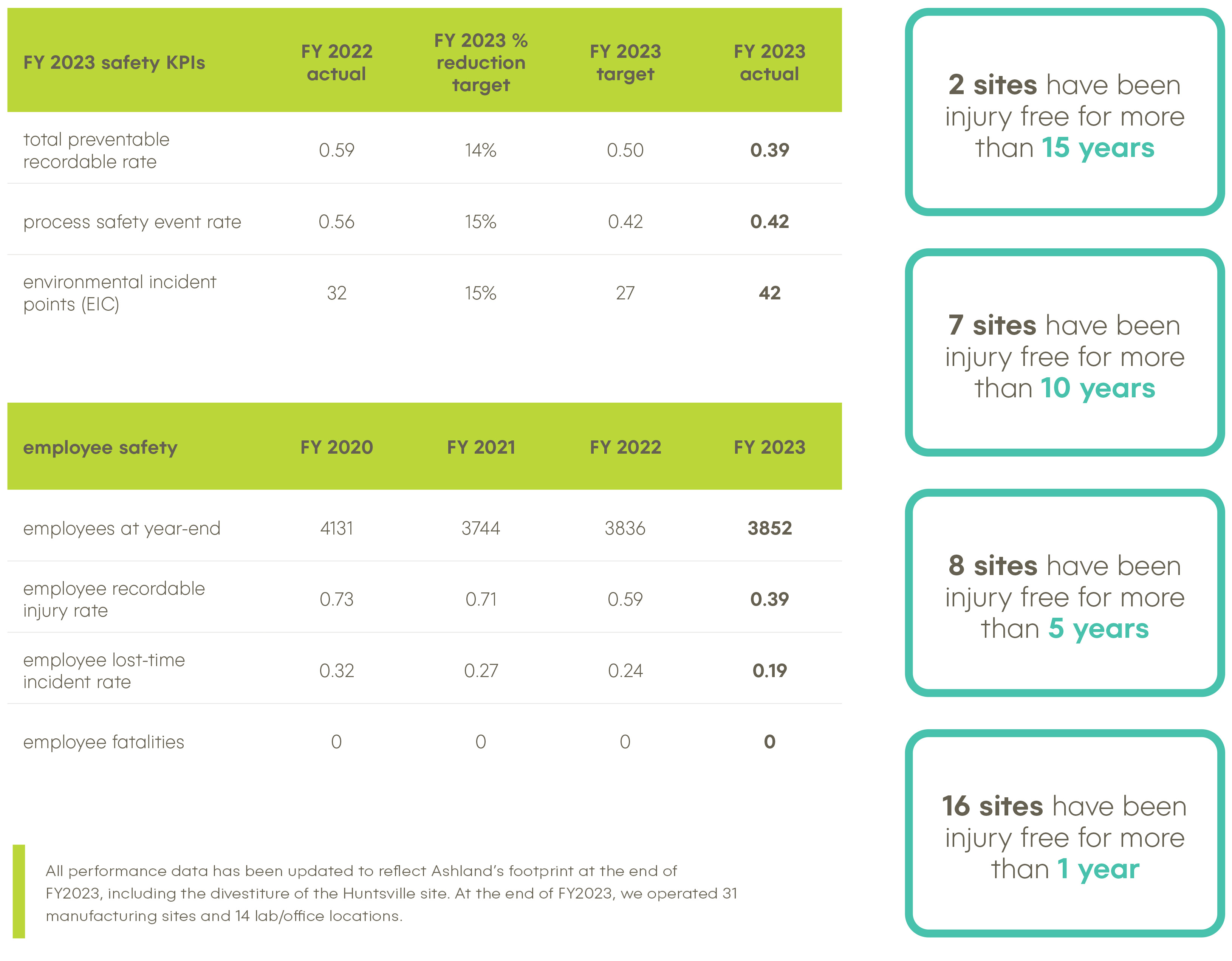zero incident culture (ZIC)
commitment to safety
Ashland’s highest priority is the safety and health of employees, customers and the communities where we live and operate. The company believes all incidents are preventable, and preventing workplace incidents is an integral part of our business strategy.
Ashland requires employees to comply with all applicable laws and regulations, as well as Ashland’s safety and health policies. All employees must abide by Ashland’s 10 Safety Expectations and proactively promote our zero incident culture. By incorporating a zero incident culture, our employees take responsibility for their safety-related actions because they are empowered to make informed decisions. Success depends on genuine commitment, basic operating principles, well-communicated visions and, most importantly, a business atmosphere where all employees care for each other.
Zero Incident Culture
Cultivating a safety culture is intentional at Ashland and is best shown by our commitment to a Zero Incident Culture (ZIC). ZIC begins with the beliefs, values and actions of Ashland’s leaders demonstrating zero incidents are possible. It means developing processes that promote compliance and allow employees to choose to be safe. ZIC consists of the following cornerstones:
• leadership – Facilitates appropriate leadership behaviors, tasks and activities to achieve our ZIC.
• employee engagement – Engages employees in our processes and fosters ownership and accountability for achieving a ZIC.
• risk reduction – Facilitates proactive processes for identification of risk reduction and near-misses, resulting in a safer work environment and behaviors necessary to achieve a ZIC.
• performance measurement – Ongoing monitoring, measurement and investigation of our performance for continuous improvement of our processes.
EHS performance
We exceeded our target for TPRR and met our target for PSI. We did not meet our target for EIC.
As an indication of our commitment to Responsible Care®, we have obtained a third-party certification to RC14001, which includes the internationally recognized ISO 14001 certification and adds additional health, safety, security, and chemical industry requirements.
Currently, Ashland has 24 ISO/RC14001 certified sites participating in group (multi-site) certifications, and we are working toward certifying all our manufacturing locations. Also, as part of our commitment to health and safety, 16 of our sites have obtained an additional ISO 45001 certification, an international health and safety management system.

A healthy workplace
At Ashland, the health and well being of our employees is important to our long-term viability. Taking care of our people is an important Ashland value. It is our responsibility to not only create a safe workplace, but also to create a healthy workplace. We empower our employees with the necessary tools and resources to support living healthy lives. At Ashland, we are committed to reducing work-place illnesses and injuries, while improving the health of our employees.
Our goal is to eliminate or reduce health hazards that could potentially impact our employees, contractors and other individuals within our operations. The protection of our employees from occupational health risks is a critical element in our preventive strategy as highlighted below.
Ashland Preventive Strategy for Workplace Health & Safety




